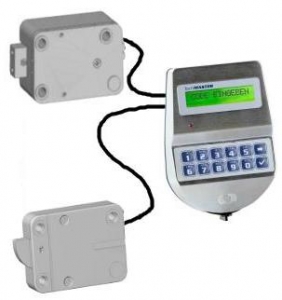Safes in higher resistance grades (4 and up) are often secured with two locks. The two locks must be independent and lock at two different locations in the boltwork *.
Often used are combinations of electronic and key locks. Both locks, for example, having VdS class 2. This is of course cheaper than two electronic locks – but – the problems with the keys remain. The advantages of the electronic lock cannot be fully exploited in this way.
There are lock systems available that are capable of multi-lock operation. If a single keyboard can control several independent locks, this is called multi-lock operation. In the USA, this has been common for a long time, but in Central and Eastern Europe, vault manufacturers sometimes still have a hard time with this concept.
However, there are good arguments for multi-lock operation:
- Two keyboards on a vault door usually don’t look good and are confusing.
- With high-quality input units, costs can be saved.
- An audit trail can be recorded in all locks
- A subsequent network connection with eg TCP/IP adapters is much easier
Another application of multi-lock operation is when the locks on the inner compartments of the safe are controlled through the keyboard on the outer door. This allows, for example, to start time delay on an inner compartment without having to open the main door of the safe.

The TechMaster input unit can control up to 5 independent locks.* This should not be confused with emergency opening locks. The latter lock at only one point in the boltwork.



